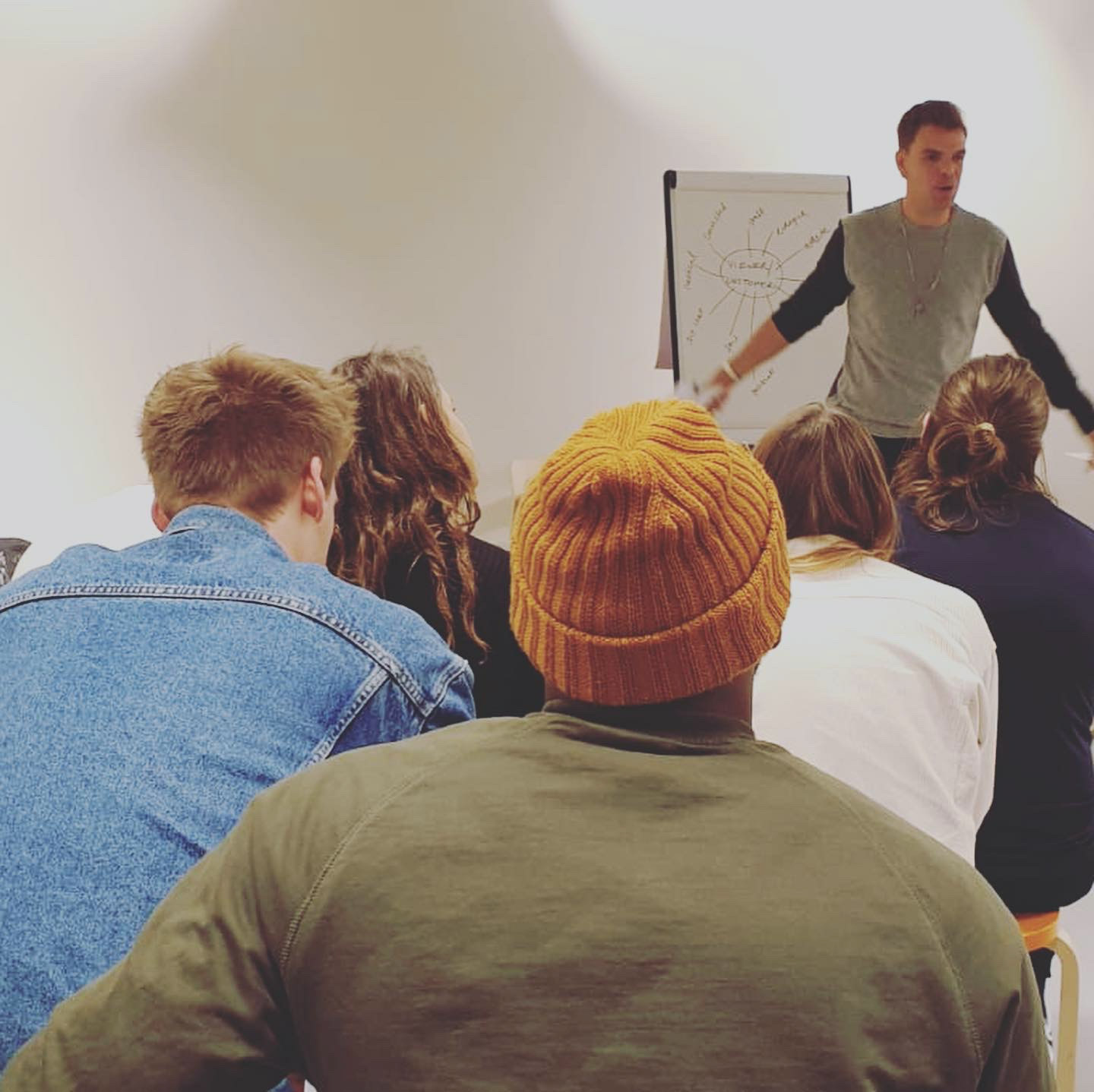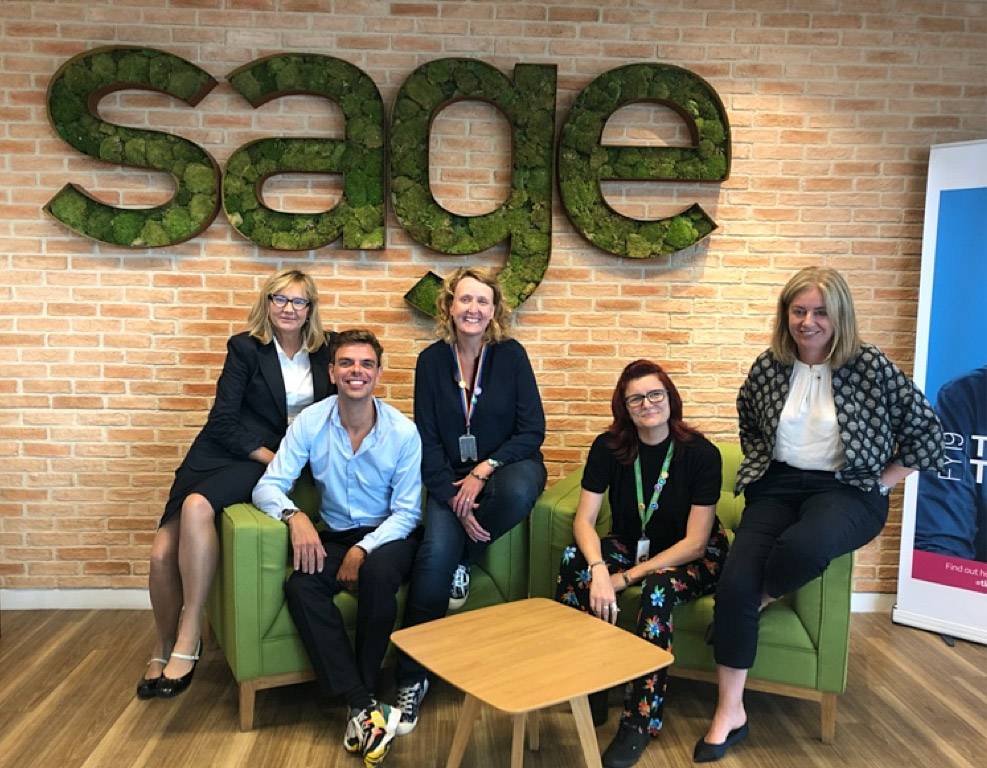-
.
Displaying items by tag: communication skills training
Improve Communication Skills: Unlock Your Full Potential
Improve Communication Skills: Unlock Your Full Potential
In today’s fast-paced world, effective communication is more important than ever. Whether you're in the workplace, engaging with clients, or simply interacting with friends and family, the ability to communicate clearly and confidently is a vital skill. At The Presenter Studio, we believe that improving communication skills is not only about what you say, but also how you say it, and the way you connect with your audience.
Improving communication skills can enhance your personal and professional life, help you build stronger relationships, and empower you to express your thoughts with clarity and impact. Here's a roadmap to developing your communication skills and unlocking your full potential.
1. Master Active Listening
Effective communication isn’t just about speaking—it’s also about listening. Active listening means truly paying attention to the speaker, understanding their message, and responding thoughtfully. This builds rapport and shows respect for the other person’s perspective.
Tips for active listening:
- Give full attention: Eliminate distractions when listening, such as checking your phone or multitasking.
- Acknowledge and confirm: Show you’re listening by nodding, making eye contact, or using phrases like "I see," or "That makes sense."
- Ask questions: Clarify what you’ve heard by asking open-ended questions, which also demonstrates interest.
When you master active listening, you can respond with greater empathy and understanding, ensuring a meaningful conversation.
2. Develop Clear and Concise Messaging
How you communicate is just as important as what you say. Many people struggle with being overly wordy or vague when trying to get their point across. The best communicators are able to express themselves clearly and succinctly, without sacrificing depth or meaning.
Tips for clear and concise messaging:
- Be mindful of your audience: Tailor your message to the audience's needs and level of understanding.
- Use simple language: Avoid jargon and overly complex terms. Speak in a way that’s easy to follow.
- Get to the point: Respect your listener’s time. Organize your thoughts and avoid unnecessary details.
At The Presenter Studio, we teach our clients the art of structuring messages in a way that’s both impactful and easy to digest. Whether you're giving a presentation or participating in a meeting, clarity is key.
3. Nonverbal Communication is Key
What you say is important, but how you say it can be even more powerful. Nonverbal cues—such as body language, tone of voice, and facial expressions—play a significant role in how your message is received. In fact, research suggests that up to 93% of communication is nonverbal!
Tips for effective nonverbal communication:
- Maintain eye contact: This shows confidence and helps build trust.
- Mind your posture: Stand or sit up straight to project authority and openness.
- Be mindful of gestures: Use hand gestures to emphasize key points, but avoid excessive movements that may distract.
- Control your tone: Ensure your voice conveys the right emotion and intent—avoid sounding monotone or disinterested.
At The Presenter Studio, we focus on helping our clients become more aware of their body language, so they can communicate with greater presence and authenticity.
4. Refine Your Speaking Skills
Public speaking can be daunting for many people, but it’s an essential communication skill that can make all the difference in your personal and professional success. Whether you're speaking in a meeting, giving a presentation, or leading a team, being a confident and engaging speaker will make you stand out.
Tips for refining your speaking skills:
- Practice regularly: The more you practice, the more confident you’ll become.
- Record yourself: Listening to recordings of your speeches or presentations can help you identify areas for improvement.
- Engage with your audience: Make your speaking dynamic by asking questions, encouraging feedback, and making eye contact.
Public speaking skills are essential, and at The Presenter Studio, we offer expert coaching to help you feel at ease in front of any audience.
5. Develop Emotional Intelligence (EQ)
Effective communication isn't just about being articulate—it’s about connecting with others on an emotional level. Emotional intelligence (EQ) refers to your ability to recognize and manage your own emotions, as well as understand and influence the emotions of others.
Tips for developing EQ:
- Practice self-awareness: Recognize your emotions and how they affect your communication.
- Empathy: Put yourself in the other person's shoes to better understand their feelings and viewpoints.
- Manage emotions: In moments of stress or conflict, stay calm and composed to communicate effectively.
By developing your emotional intelligence, you can connect more deeply with others and communicate in a way that resonates with their emotions and needs.
6. Seek Constructive Feedback
One of the best ways to improve communication skills is by seeking feedback from others. Constructive feedback helps you identify areas for growth and gives you actionable advice on how to improve.
Tips for seeking feedback:
- Ask for specific feedback: Instead of asking, “How did I do?” try asking, “What could I have done differently?” or “How can I make my message clearer?”
- Be open to criticism: Don’t take feedback personally. See it as an opportunity to learn and grow.
- Apply the feedback: Once you receive feedback, take steps to implement it and track your progress.
At The Presenter Studio, our expert coaches provide personalized feedback that helps you refine your skills and become a more effective communicator.
7. Ongoing Practice and Learning
Communication is a skill that evolves over time. The more you practice and learn, the better you’ll become. Whether it’s through reading, taking courses, or engaging in conversations, continuous learning and practice are key to long-term improvement.
At The Presenter Studio, we offer a variety of training programs to help you enhance your communication skills. Whether you’re looking to improve your public speaking, refine your message delivery, or become a more effective leader, we provide the tools and resources you need to succeed.
Ready to Improve Your Communication Skills?
At The Presenter Studio, we are dedicated to helping individuals like you improve their communication abilities. Whether you want to speak with confidence, connect more deeply with others, or present ideas clearly and persuasively, we are here to guide you every step of the way.
Ready to take your communication skills to the next level? Contact us today and start your journey toward becoming a more confident and impactful communicator!
Get in touch with us today: https://www.presenterstudio.com/business-presenter-training/presentation-skills-training or email: This email address is being protected from spambots. You need JavaScript enabled to view it.
How Less is More in Communication Skills
In the art of communication, the adage "less is more" holds a timeless truth. Whether you are delivering a presentation, leading a team meeting, or having a personal conversation, simplicity can be your most powerful tool. Cutting through the noise and getting straight to the heart of your message creates clarity, impact, and connection—all essential elements of effective communication.
We live in a world inundated with information. From endless emails to lengthy presentations, it’s easy for messages to get lost in the clutter. Being concise doesn’t mean cutting corners or leaving out important details. Rather, it means focusing on what truly matters and presenting it in a way that is easy to understand and remember.
Great communicators understand that the key to being heard is not saying more, but saying it better. By distilling complex ideas into clear, impactful messages, you not only capture attention but also show respect for your audience’s time and mental bandwidth. When your communication is concise, it is more likely to resonate and stick with your audience long after the conversation ends.
The power of simplicity can be seen across all forms of communication. In public speaking, for example, short and impactful sentences often carry more weight than lengthy, meandering ones. Famous speeches—from Martin Luther King Jr.'s "I Have a Dream" to Steve Jobs’ product launches—are celebrated not just for what was said, but for how succinctly and powerfully the message was delivered. Each word was intentional, each pause deliberate.
In professional environments, brevity is equally valuable. Whether you’re writing an email, pitching an idea, or leading a discussion, getting to the point quickly signals confidence and competence. Long-winded explanations can lose your audience and dilute your message. Instead, focus on the essential points, and let your audience ask follow-up questions if they need more detail.
However, practicing the "less is more" approach requires thoughtful preparation. Start by identifying your core message. Ask yourself, "What do I want my audience to take away from this?" Once you have clarity on your goal, eliminate any unnecessary words, jargon, or tangents. Simplicity does not come at the cost of depth; it’s about presenting depth in a streamlined way.
Active listening also plays a vital role in concise communication. When you listen carefully to your audience, you can tailor your message to address their specific needs and interests. This prevents over-communication and ensures that your words are both relevant and impactful.
At The Presenter Studio, we teach the art of impactful communication. One of our core principles is helping individuals master the balance between saying enough and saying too much. When you embrace the philosophy of "less is more," you give your audience the space to process, understand, and connect with your message. Remember, communication isn’t about how much you say; it’s about how well you say it.
So, the next time you communicate, think about simplicity. Strip away the excess, focus on your key points, and deliver your message with clarity and intention. In the end, less truly is more. For more information about our presentation skills courses visit the website: https://www.presenterstudio.com/business-presenter-training/presentation-skills-training or send us an email This email address is being protected from spambots. You need JavaScript enabled to view it.
Communication Skills Course: The Importance of Warmth
In any interaction, whether personal or professional, the way we communicate profoundly shapes the connections we build. While clarity and confidence often take center stage, there is one often-overlooked element that truly transforms communication: warmth. Warmth has the power to humanize conversations, foster trust, and create a genuine bond between speaker and listener. For anyone seeking to elevate their communication skills, cultivating warmth is essential.
Warmth is not merely a trait; it is an active choice and a skill that can be developed. It manifests in our tone of voice, facial expressions, body language, and even the words we choose. When we communicate with warmth, we signal to others that we are approachable, empathetic, and genuinely interested in them. This, in turn, encourages openness and creates an environment where people feel valued and understood.
In professional settings, warmth can be a game-changer. Presenters, team leaders, and anyone in client-facing roles benefit immensely from being perceived as warm. Audiences are more likely to engage with someone they find relatable and trustworthy. A warm communicator can turn a rigid business pitch into a compelling story, a tense meeting into a collaborative dialogue, and a skeptical audience into active participants. It’s not just about delivering information; it’s about making people feel something positive when they hear you speak.
Research backs up the importance of warmth in communication. Studies show that people assess trustworthiness—a key component of warmth—before they evaluate competence. This means that no matter how skilled or knowledgeable you are, your message may not land effectively if it’s not delivered with genuine warmth. By prioritizing warmth, you build rapport, reduce resistance, and make your communication more memorable.
Warmth also plays a critical role in personal interactions. Friends, family, and colleagues all gravitate towards those who make them feel valued and heard. Simple acts like maintaining eye contact, offering a sincere smile, and speaking with an empathetic tone can transform everyday conversations into meaningful exchanges. These habits not only enhance your relationships but also reflect positively on your overall character.
Developing warmth in communication requires self-awareness and practice. Start by paying attention to your nonverbal cues. Are your facial expressions welcoming? Does your body language convey openness? Then, focus on your tone of voice. A calm, enthusiastic, or gentle tone can work wonders in making your message more appealing. Finally, make a conscious effort to listen actively. Warmth isn’t just about how you speak; it’s about making others feel heard and valued.
At The Presenter Studio, we believe that great communicators don’t just inform—they inspire, connect, and engage. Warmth is the secret ingredient that makes all this possible. Whether you’re speaking to a crowd of hundreds or having a one-on-one conversation, warmth has the power to transform how your message is received. Embrace it, and watch as your communication skills reach new heights. For more information on our presentation skills courses visit: https://www.presenterstudio.com/business-presenter-training/presentation-skills-training or drop us an email at This email address is being protected from spambots. You need JavaScript enabled to view it.
Communication Skills - The Importance of Non-Verbal Communication.
When it comes to communication, words are only part of the equation. Non-verbal communication—including body language, facial expressions, and tone of voice—can significantly impact how your message is received. Here’s why non-verbal communication matters and how you can use it to build stronger connections.
First, pay attention to your body language. Open gestures, good posture, and a relaxed stance convey confidence and approachability. Crossing your arms or avoiding eye contact, on the other hand, may make you appear defensive or disinterested.
Your facial expressions also play a critical role in communication. A genuine smile can build rapport, while raised eyebrows or a nod can show engagement and encourage further conversation.
Tone of voice is another powerful tool. The speed, pitch, and volume of your speech can influence how your words are interpreted. Speaking too quickly may confuse your audience, while a warm and steady tone fosters trust.
Non-verbal communication can also help you gauge how others are feeling. Watch for cues like crossed arms, lack of eye contact, or nervous movements. These signals can help you adjust your approach to ensure your message is received effectively.
Mastering non-verbal communication takes practice, but it’s an essential skill for building stronger connections, whether you’re leading a team, networking, or presenting to an audience.
What are 5 Good Communication Skills?
Strong communication skills are essential for building relationships, conveying ideas, and achieving success in the workplace. Whether you're leading a team, pitching to clients, or delivering a presentation, these tips will help you communicate more effectively:
Start by focusing on clarity. Avoid jargon and aim to make your message simple and easy to understand. Clear communication ensures your audience understands your key points without confusion.
Listening actively is just as important as speaking. Pay attention to what others are saying, ask questions, and show empathy. Active listening builds trust and strengthens professional relationships.
Adapt your communication style to suit your audience. Whether you're addressing senior executives or working with your team, tailoring your tone and approach ensures your message resonates.
Body language plays a key role in communication. Maintain good posture, make eye contact, and use gestures to emphasize your points. Non-verbal cues often speak louder than words.
Finally, practice makes perfect. Rehearse key conversations or presentations to boost your confidence and refine your delivery. The more you practice, the more natural and effective your communication will become.
Mastering communication skills takes time, but these techniques can help you excel in your business and personal interactions.
Check out our communication skills training programmes on our website. Tailormade to suit your needs – from public speaking to presentations at work. https://www.presenterstudio.com/business-presenter-training/presentation-skills-training
Media Training Tips to Shine in Any Interview
Media interviews can feel intimidating, but with the right preparation and mindset, they’re an opportunity to showcase your expertise and connect with your audience. Follow these five essential tips to ensure you shine in any media setting:
1 Know Your Key Messages
Before the interview, identify 2–3 key messages you want to communicate. Stick to these points to ensure your audience remembers the right takeaways.
2 Understand the Media Format
Whether it’s live TV, radio, or a podcast, tailor your approach to suit the medium. For example, TV demands concise, impactful soundbites, while podcasts may allow for deeper discussions.
3 Anticipate Tough Questions
Prepare for challenging or unexpected questions. Rehearse how you’ll steer the conversation back to your key messages without sounding evasive.
Be Aware of Your Body Language
Non-verbal cues matter! Sit up straight, maintain eye contact, and avoid fidgeting. Confidence in your posture translates to confidence in your words.
5 Practice, Practice, Practice
Practice with a media training coach or record yourself answering questions. Reviewing your performance helps identify areas for improvement.
By mastering these tips, you’ll not only build your confidence but also ensure your message lands effectively with your audience. To read more about our media training courses check them out here: https://www.presenterstudio.com/business-presenter-training/media-training
Media Training Main Content
If you want media training that is current, dynamic and gets the best out of you, we are the place to come.
We are the UK's leading media training company and offer something extra special and personal in the all too sterile and out-of-date world of media training.
You'll work with BAFTA winning TV Producers, media coaches and former BBC NEWS journalists that have worked with some of the biggest names in broadcasting.
We will design a media training programme based on your goals and our own intensive research on your business.
Clients come to us for coaching for TV, radio, corporate videos, and social media content for instagram, YouTube and TikTok - our training is bespoke to your needs.
We are the only company to develop your 'personal brand' helping you find your own presenting style - one that works with the brand of your business.
We’ll teach you our secrets, and expert tips and tricks that we have developed in over 20 years in the media business.
So if you want to maximise your media opportunity we can help you realise your true potential.
A BESPOKE MEDIA TRAINING PACKAGE TO SUIT YOUR NEEDS:
Everything is bespoke to you, and the type of media work you wil be doing, ensuring we get exceptional results.
The length of our sessions are also bespoke to your needs. So we can discuss the various options:
- 1-to-1 two hour coaching sessions in person or online.
- 1-to-1 full day(s) or half day coaching in person or online.
- Group coaching sessions in person or online.
PRIOR TO YOUR MEDIA TRAINING SESSION - WE WILL RESEARCH YOU, YOUR BUSINESS AND YOUR NEEDS:
In advance of our media training session we’ll send you a form to fill in where we can start to get to know you, your business and your needs. We'll then undertake detailed research into your business, brand, and customer – from looking at your website to social media to any previous media work.
DEVELOP YOUR 'PERSONAL BRAND AND CREATE CONTENT THAT IS ON MESSAGE AND AUTHENTIC:
Our media training programmes are personality driven as your personality is the key to your success. Audiences are wise to and turned off by people who have been ‘media trained’.
If you want to be successful you need to come across as natural, authentic and honest so that your audience can connect and identify with you - it's what we call finding your personal brand. And we'll ensure your personal brand works with the brand of your business.
You'll develop your own style, find your own voice and ensure that your message feels authentic.
We are also real creatives so if you want to create content for your social media we can come up with scripts, ideas and a strategy for you.
Or if this is more for TV opportunities we'll help you master interviews, craft your messaging, and come across as your authentic self.
WORK WITH A TOP TV EXECUTIVE PRODUCER & BBC JOURNALIST:
We have produced TV’s biggest programmes from BBC NEWS to entertainment shows like Strictly Come Dancing to Documentaries to Features.
A Producer is hired to ‘produce’ the Presenter – writing their scripts and giving them direction.
We are seasoned experts in content creation and in making 'you' look good - from perfecting your message, your script and how to deliver it.
HOW TO CRAFT A CLEAR MESSAGE THAT HAS IMPACT:
We'll also look at your messaging, scripts and content as without a clear message everything else falls down.
We are experts in script writing and content creation and will reveal our tricks on how to write and structure your content to ensure your message authentic, engaging and impactful.
HOW TO MASTER THE RULES OF THE MEDIA:
If you are to be working in TV or Radio our media training courses are bespoke to you and the areas we look to include are:
- How to think about your media interview.
- How and what to prepare.
- How to master an interview and answer difficult questions.
- How to get your message across.
- How to talk to time.
- How to present with impact.
- How to be your authentic self.
A FANTASTIC SUCCESS RATE AND EXCEPTIONAL CLIENT TESTIMONIALS:
Our media training coaching is an exciting mix of both practical and information based learning with individual feedback and coaching.
Our clients have gone on to appear on BBC NEWS, SKY NEWS, Channel 4 News, ABC America, ITN, ITV, BBC’s Question Time, Channel 4, Channel 5, SKY1, More 4, BBC Radio, Women's Hour, Al Jazeera TV, CNBC, Red Bull TV and magazine shows like The One Show, This Morning, The Steph Show.
Clients also come to us for coaching for social media videos and corporate videos.
Clients audience reach has soured and have seen their businesses grow to exceptional levels as a result of the work we have done.
Being the face of your business is now commonplace for many businesses.
We work with clients of all levels of experience, and businesses big and small.
We’ve worked with a wide range of clients - everyone from international sports stars like Colin Jackson CBE and Mark Webber AO to entertainments biggest presenters like Claudia Winkleman and Christine Bleakley to Executive Directors of major corporations like The Prudential and Porsche, to lawyers, to journalists for The Mirror, The Guardian, AOL, The Huffington Post and New York Times, to medical professionals.
OUR RECENT CLIENTS:
Some of the major brands we have worked with include ASOS, Prudential Insurance, Red Bull, Porsche Racing, National Pharmacy Association, Virgin Business, Nike, Simpson Millar Solicitors, Lush Cosmetics, No.1 Rosemary Water, GQ Magazine, British Vogue, ADT Direct, marketing agencies like WCRS and many high profile celebrities and sports stars.
Read our amazing client testimonials on the next page.
Here are a selection of what some of our clients had to say about working with us:
“They are fun but super professional to work with. I learnt a lot in a short space of time, cheers!”
Mark Webber, Porsche
“Look no further if you want to learn about the skills of TV and video presentation. They were a terrific team doing a terrific job. Many thanks.”
Dan Evans, The Telegraph
“They have the ability to get the best out of people with fresh ideas, enthusiasm, and a personable and insightful approach.”
Naina Parmar, BBC News
“I wish I'd done this years ago. I will definitely be recommending you! Thanks loads.”
Bonita Norris, Red Bull TV
“The Presenter Studio hosted a well-researched, engaging and above all really useful session for over 30 of our team. Many of them commented how it was the best session they'd ever done. Would definitely recommend!”
NIKE
“It was fantastic. I’d recommend this to anyone.”
AOL
“I am now so much more confident.”
National Pharmacy Association
“Thanks so much for all the great training."
No.1 Rosemary Water
“You guys were an absolute pleasure. And we learnt so much and are now media ready.”
Lush Cosmetics
“Some great sessions with great learning.”
ASOS
“Thankyou for delivering such an excellent course. It filled us with as much knowledge as it did excitement. Your passion shines through. Seriously well done!”
ADT Direct
CASE STUDY 1
Client: NIKE
BRIEF:
To train 100 of their social media influencers from all around the world in one session in London.
THE PROCESS:
NIKE asked us to coach 100 EKINS (social media influencer team – NIKE spelt backwards) to help them come across on brand, natural and engaging for all their social media and video content.
After initial conversations we wrote them a bespoke training programme that was both practical and informative, working with the scripts and type of work NIKE were doing.
THE TRAINING DAY:
We had 3 hours to coach 100 clients flown from all over the world to work with us. Clients worked in teams and received individual coaching around various exercises.
WHAT NIKE SAID:
“Big shout out for putting together an awesome run of show and quickly learning and understanding the group’s needs. The tone of voice of how the session was great too, very casual and informal, the best way EKINs respond! The Team expressed how fun, engaging, practical and ultimately useful they found the session.”
NIKE

CASE STUDY 2
Here's one example of how a client had a bespoke media training day that also combined presentation skills coaching.
CLIENT: SAGE
BRIEF:
A one day bespoke training session for 4 people, to include media training and presentation skills coaching.
BEFORE THE DAY:
Each attendee is sent a form, where they can tell us about their business, their role, their needs and want to get out of their time with us.
A BESPOKE TRAINING PROGRAMME:
We tailor-make the programme to suit each individual’s needs, and those of the department that asked us to do the training.
A DAY OF TWO HALVES - AM: MEDIA TRAINING. PM: PRESENTATION SKILLS:
The morning focussed on media training, and the afternoon on presentation skills.
We started by taking a step back, looking at the brand of the business, their customer, the ambition of the business and the purpose of their video content. This ‘re-group’ really helps the clients to revaluate, refocus and puts everything we do into context.
DEVELOPING YOUR PERSONAL BRAND:
We discuss the importance of finding your own voice, but one that works within the voice of the business – and that is the core purpose of the whole day – to explore, develop and establish each individual’s presenting style.
OUR DO’S AND DON’TS:
There are no general rules to how to be a good presenter – as each person is different. So we chat you through our checklist of things to think about when it comes to being ‘you’ and ‘believable’ on camera.
ON CAMERA WORK:
We worked with the clients in lots of different ways, with and without scripts - putting the clients in scenarios that reflect the media work they will have to do. Each exercise is also about building their personal brand, with detailed coaching from us.
SCRIPTS AND DEALING WITH INFORMATION/TAKE-OUT:
Scripts play a big part in what we do – the foundation to a good presenter is understanding what makes a good script, how to make it your own, and how to deal with any information you might need to get across.
PRESENTATION SKILLS:
The afternoon was spent looking at presentation skills. We started off with our do’s and dont’s, before giving feedback on the scripts they had previously written.
Much time was then spent rewriting scripts, before we worked with each person individually on delivering their new presentation in front of the room.
THEIR PERSONAL BRANDS:
We end the day discussing their personal brands, bringing together all the work we have done.








